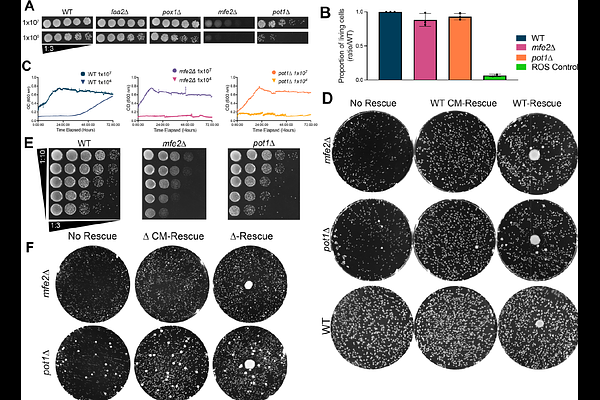Peroxisomes regulate virulence and cell density sensing in Cryptococcus neoformans

Peroxisomes regulate virulence and cell density sensing in Cryptococcus neoformans
Jacobs, E.; Dragotakes, Q.; dos Santos, S. R.; Smith, D. F.; Smith, B.; Wolf, J. M.; Coelho, C.; Casadevall, A.
AbstractCryptococcus neoformans, a ubiquitous environmental fungus that causes cryptococcosis, survives in diverse environments including human hosts due to metabolic flexibility. Consequently, identifying how C. neoformans connects diverse metabolic pathways and virulence factor expression is important for understanding fungal pathogenesis. Peroxisomes play an essential role in metabolic homeostasis and regulation of carbon and lipid metabolism. In this article, we report a link between nickel exposure, a known hypoxia-mimetic and mitochondrial respiration inhibitor in yeast, and peroxisomal {beta}-oxidation. Loss of the last two genes involved in the peroxisomal {beta}-oxidation pathway, MFE2 (CNAG_05721) and POT1 (CNAG_00490), resulted in cell density-dependent virulence factor defects and growth inhibition attributed to a metabolic state involving large peroxisomes. We found that increasing cell density rescued virulence factor phenotypes and growth. Our results implicate mitochondrial retrograde signaling (RTG), a previously uncharacterized pathway in C. neoformans, in cell density sensing, peroxisomal {beta}-oxidation pathway expression, and virulence, thus highlighting a critical role for metabolism in cryptococcal virulence.